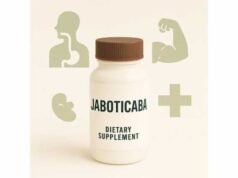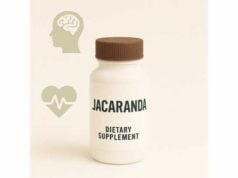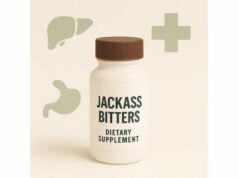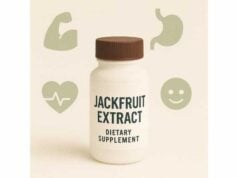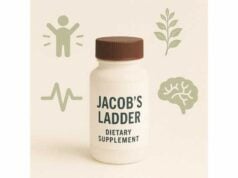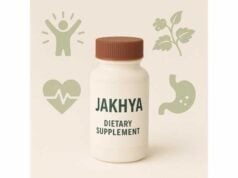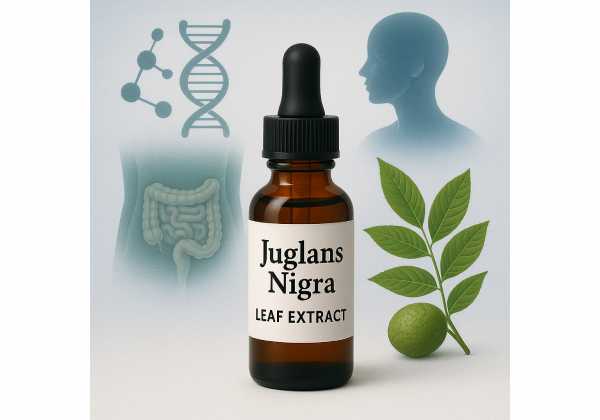
Juglans nigra leaf extract—derived from the leaves of the American black walnut tree—has long appeared in traditional remedies for skin cleansing, scalp comfort, and minor irritations. Modern extraction methods (water, glycerin, hydroalcoholic, and occasionally liposomal systems) capture a mix of polyphenols, flavonoids, and tannins distinct from the better-known hull (green husk) or kernel fractions. This chemical profile explains two things users often notice: a subtle astringent “tightening” and a calming, clean-skin feel when formulas are crafted well and used at sensible doses. It also explains the risks: at higher strengths and longer contact times, black walnut leaf preparations can irritate skin or stain fabrics. This guide translates the science into practical steps—how it works, where it helps, dosing by product type, what to pair it with, who should avoid it, and how to evaluate labels—so you can use Juglans nigra leaf extract confidently as a targeted, supportive ingredient rather than a cure-all.
Essential Insights
- Leaf extracts provide a light astringent and soothing effect in low-dose, short-contact or leave-on cosmetic formulas.
- Best used for oily or rough body areas, scalp comfort, and odor-prone zones; not a stand-alone therapy for infections.
- Typical leave-on use levels: 0.1–0.5%; rinse-off or short-contact: 0.5–2%; start low and patch test.
- Avoid oral self-medication and do not use during pregnancy or on children’s skin without medical advice.
Table of Contents
- What is Juglans nigra leaf extract and how it works
- Benefits you can expect with smart use
- How to use it, step by step
- Dosage, formats, and frequency
- Side effects, precautions, and who should avoid
- Evidence: what the science says today
What is Juglans nigra leaf extract and how it works
Botanical and chemistry at a glance. Juglans nigra (American black walnut) belongs to a genus rich in polyphenols. When the leaf is extracted—most commonly with water, glycerin, or hydroalcoholic mixtures—the resulting fraction contains tannins, flavonoids (such as quercetin derivatives), phenolic acids (including ellagic- and gallic-related structures), and minor terpenoids. This fingerprint differs from hull (green husk) and kernel extracts; the leaf is typically lower in juglone than the fresh hull but still carries astringent, antimicrobial, and antioxidative signals. The precise profile depends on cultivar, geography, harvest timing, and solvent system, which is why some products feel gentle while others sting.
What those molecules do on skin and scalp.
- Astringency and “tightening.” Leaf tannins form reversible bonds with surface proteins, creating a short-lived tightening effect that reduces shine and the “squeaky” feel after washing. On rough or flaky body areas, this can smooth texture temporarily.
- Soothing potential in balanced formulas. Flavonoids and certain phenolics show calming signals in preclinical models. In practice, low-dose leaf extract can dial down the look of transient redness from shaving, friction, or over-cleansing—especially when paired with humectants (glycerin, panthenol) and barrier lipids.
- Surface hygiene support. The leaf’s phenolics can discourage microbial growth on the skin’s surface in vitro. In rinse-off cleansers or short-contact tonics, this may help reduce odor and buildup on feet, back, or scalp without resorting to harsh antiseptics.
- Antioxidant contribution. Chemical assays highlight radical-scavenging capacity. In leave-on serums, this translates into small, supportive protection against daily environmental stress—best viewed as adjunctive to sunscreen and barrier-savvy moisturizers, not a substitute.
Forms you’ll encounter and why they matter.
- Aqueous/glycerin extracts: Gentler; ideal for leave-on serums, toners, and scalp tonics at low percentages. They hydrate as they calm, with minimal sting.
- Hydroalcoholic extracts: Slightly “sharper” feel and greater astringency; useful in short-contact products but more likely to irritate sensitive skin.
- Liposomal or encapsulated forms: Designed for elegant texture and controlled delivery; often paired with niacinamide or panthenol for better tolerance.
- Soaps and rinses: Color development is common; these excel when you want brief action and easy wash-off.
What Juglans nigra leaf extract is not. It is not a cure for acne, dandruff, fungal nail infections, or systemic infections. It does not replace prescription treatments. It is best framed as a supportive topical for comfort, surface hygiene, and finish—especially on body areas—when used in measured amounts and appropriate vehicles.
Benefits you can expect with smart use
1) Lightweight mattifying and textural smoothing on body areas. Leaf-derived tannins provide transient tightening and a clean-skin feel without the heavy film of waxy occlusives. Users often report better glide under clothing and less tack on the back, chest, and shoulders when a low-dose extract cleanser or toner is used a few times per week. Because astringency can also be drying, the best results come from short contact followed by a bland moisturizer to lock in water.
2) Support for surface hygiene in odor-prone zones. Warm, occluded areas—feet, footwear interiors, and sometimes the scalp—harbor sweat residues and biofilms that drive odor and dullness. In these contexts, black walnut leaf extracts fit well into rinses or pre-wash tonics to loosen buildup and reduce malodor with routine use. They’re not sterilants; think of them as part of a gentle hygiene stack alongside surfactants, chelators (to bind minerals), and regular laundering of textiles.
3) Calmer-looking skin after friction or shaving. Many people notice that post-shave sting or post-workout flush subsides faster when a low-alcohol leaf-extract toner is pressed onto clean, damp skin and layered under a light moisturizer. The flavonoid and phenolic mix seems to buffer irritant feel in everyday situations. Expect modest, incremental benefits—more comfortable skin and less visible tightness—rather than dramatic redness reversal.
4) Scalp comfort without heavy residue. For those who dislike oily pre-wash treatments, aqueous leaf extract tonics offer a featherweight option to freshen the scalp between washes. Applied for 5–10 minutes before shampoo, they may help lift scale and oil, ease mild itch, and leave hair with more movement. As with any active scalp step, less is more: start weekly and build slowly.
5) Synergy inside modern formulas. Juglans nigra leaf extract is frequently paired with panthenol, allantoin, glycerin, beta-glucan, and niacinamide. The extract contributes astringent/soothing signals; partners add hydration, barrier cofactors, or sebum-balance help. Together they create a stable, low-sting profile that’s kinder to sensitive or combination skin than high-alcohol botanicals.
Expectation setting (what it won’t do). It will not regrow hair, bleach hyperpigmentation, or cure chronic inflammatory skin diseases. It may visibly refine an oily body zone for several hours, reduce odor when used regularly in foot care, and soften the look of post-shave redness—provided you keep concentrations conservative and follow with moisturizer. If you have a diagnosed skin condition, treat the extract as a supportive cosmetic, not a therapy; continue working with your clinician on evidence-based care.
How to use it, step by step
Patch-test first (non-negotiable). Apply a pea-sized amount of your chosen product to the inner forearm twice daily for 3 days. Skip facial or scalp use if you develop persistent redness, stinging, swelling, or small bumps. Because leaf extracts vary widely by solvent and strength, this step matters even for “sensitive-skin” products.
If you’re curious about facial use (go gentle).
- Choose an alcohol-free aqueous/glycerin extract at ≤0.2% in a rinse-off cleanser.
- Massage on damp skin for 30–60 seconds, then rinse.
- Immediately apply a water-rich serum (glycerin or hyaluronic acid) and a light moisturizer.
- Limit to 2–3 evenings per week initially; avoid pairing with acids, retinoids, or scrubs the same night.
Tip: Most people will get more mileage using leaf extract on body and scalp rather than the face.
Back, chest, and shoulders (best targets).
- Short-contact body wash: Use a cleanser containing 0.5–2% leaf extract. Work a palmful (≈5–7 mL) over oily or rough zones for 1 minute, then rinse.
- Leave-on body toner: Alcohol-free, 0.1–0.3%. Apply 1–2 mL to clean, dry skin 3×/week, then moisturize.
- Post-care: Lock in water with a fragrance-free lotion to counteract tannin-related tightness.
Foot care (odor and roughness).
- Soak: Add 5–10 mL of a 1% liquid leaf extract to 2 L warm water; soak 10 minutes; rinse and dry thoroughly, especially between toes.
- Follow-up: Nightly 10–20% urea cream for softening.
- Frequency: 2–4×/week until odor improves, then taper.
Scalp routine (light, occasional).
- Pre-wash tonic: Distribute 1–2 mL of ≤0.5% aqueous extract across the scalp; 5–10 minutes contact; shampoo.
- Start at 1×/week, increasing to 2×/week if tolerated.
- Avoid applying right after harsh chemical services or on abraded skin.
Formulation pairings that help.
- Chelators (e.g., sodium phytate) to lift minerals and residue—reduces staining risk.
- Humectants (glycerin, panthenol) to offset dryness.
- Niacinamide (2–5%) for sebum-balance synergy on body areas.
- Low-foam, mild surfactants to minimize barrier disruption in cleansers.
What not to combine in the same session.
- Strong AHAs/BHAs, retinoids, benzoyl peroxide, and abrasive scrubs on the same area.
- Occlusive wraps (increase penetration and irritation).
- Freshly bleached textiles—staining is more likely when residue contacts damp fabric.
Dosage, formats, and frequency
Because Juglans nigra leaf extract is a topical cosmetic ingredient, “dosage” refers to finished-product concentration and contact time, not mg/kg body weight.
Concentration guidance (finished products).
- Rinse-off cleansers/soaps: 0.5–2.0% leaf extract; limit contact to ≤1 minute. Expect some color development and a modest astringent feel.
- Leave-on body toners/lotions: 0.1–0.5% aqueous/glycerin extract; keep alcohol low or absent. Start at the lower end for sensitive skin.
- Scalp pre-wash tonics: ≤0.5%; 5–10 minutes before shampoo.
- Foot soaks: Final bath 0.025–0.05% (e.g., 5–10 mL of a 1% liquid extract in 2 L water).
At-home usage amounts (practical volumes).
- Body wash: palmful (≈5–7 mL), 1 minute contact.
- Body toner: 1–2 mL over back/chest per session.
- Scalp tonic: 1–2 mL distributed across the scalp.
- Foot soak: 10 minutes, 2–4×/week during odor-control phase.
Frequency strategy.
- Begin with 2–3 sessions per week for leave-on body products; increase to 5–7 only if skin remains comfortable and hydrated.
- For rinse-off cleansers, daily use is reasonable if you moisturize afterward and experience no tightness or flake.
- For scalp, 1–2×/week is usually enough; daily use is rarely needed and may dry the scalp.
Layering order (face or body).
- Cleanser (mild surfactant, optional leaf extract).
- Humectant serum (glycerin/hyaluronic acid).
- Leaf-extract toner or serum (if leave-on).
- Moisturizer (light emulsion; ceramides if barrier is fragile).
- Sunscreen (AM).
When to scale back.
- If you notice stinging, increasing redness, or persistent tightness, halve either the concentration or the frequency.
- If you see fabric staining near treated areas, lower concentration, rinse more thoroughly, or switch to short-contact use only.
- If you’re acne-prone and closed comedones appear where heavy layers were used, simplify the routine and reduce leave-on steps.
Not recommended.
- Oral ingestion of leaf extracts or concentrated tinctures. There is no standardized, evidence-based oral dose for consumer use, and plant naphthoquinones can be harmful if swallowed.
- High-strength spotting (>2% in leave-ons) on delicate skin or under occlusion. The risk–benefit tilts toward irritation and staining.
Side effects, precautions, and who should avoid
Typical reactions and how to avoid them.
- Irritant contact dermatitis: burning, stinging, dryness, or visible redness—more likely with hydroalcoholic formulas, higher strengths, or prolonged contact. Prevention: patch test, start low (≤0.2–0.3% for leave-ons), and moisturize after each use.
- Staining: brownish discoloration of skin, nails, hair, or fabrics. Skin staining usually fades as the outer layer sheds; textiles may stain permanently. Prevention: lower strength, shorter contact, thorough rinse, and darker towels during trials.
- Eye irritation: avoid contact; flush with water if exposure occurs.
- Allergic reactions (uncommon but real): persistent itch, swelling, or vesicles warrant discontinuation and medical advice.
Who should avoid or use only with clinician guidance.
- Nut-allergic individuals: while leaf extracts differ from nut proteins, cross-reactivity and contact reactions are possible. It’s safest to avoid.
- Pregnancy and breastfeeding: avoid due to insufficient safety data and the potential cytotoxicity of certain plant naphthoquinones at higher exposures.
- Infants and young children: their skin is more permeable; avoid routine use.
- People with active eczema, open wounds, or fragile barriers: the astringency may aggravate symptoms; prioritize barrier-repair routines instead.
- Concurrent strong actives: if you use prescription retinoids or recent chemical peels on a body area, do not add leaf extract the same day.
Stop immediately and seek medical care if you develop blistering, swelling of lips or eyelids, wheeze, widespread hives, or if a rash worsens despite stopping the product. Accidental ingestion of concentrated extract warrants urgent evaluation.
Quality and label red flags.
- Prefer products that name the plant part (leaf), identify the solvent (e.g., water/glycerin), and list an approximate percentage.
- Be skeptical of oral claims or promises to cure infections or systemic conditions.
- For DIY users: preserve water-based formulas properly, keep pH ~4.5–6.0, add a chelator to limit staining, and discard any batch that darkens markedly or irritates on patch test.
Evidence: what the science says today
What’s strong.
- Chemical characterization of Juglans species—including J. nigra leaves—shows a dense polyphenol and tannin profile. This underpins the astringent feel, antioxidant capacity in chemical assays, and potential for surface hygiene support.
- Preclinical signals: extracts from black walnut parts modulate inflammatory mediators and demonstrate antibacterial activity in vitro. These signals justify cautious topical exploration at low concentrations and short contact.
What’s emerging but not definitive.
- Topical leaf extracts from related species (e.g., Juglans regia) have improved wound parameters in animal models and performed acceptably in small cosmetic-formulation studies. While not interchangeable, these data add plausibility to the soothing and surface-support narrative when leaf extracts are thoughtfully formulated.
- Cultivar and solvent effects matter. Polyphenol content and juglone levels vary by cultivar and extraction, explaining why one brand’s toner feels gentle while another stings.
What’s limited or lacking.
- High-quality human trials specifically testing Juglans nigra leaf extract for acne, dandruff, odor, or oiliness endpoints are limited. Most consumer-relevant claims extrapolate from in vitro results or from J. regia (English walnut) data.
- Standardized dosing for leave-on versus rinse-off products is not universally agreed upon, necessitating conservative, patch-tested use.
Practical interpretation for users.
- Treat Juglans nigra leaf extract as a special-purpose adjunct—useful for freshening oily body areas, aiding odor control in feet, and offering a light, clean finish on the scalp.
- Keep concentrations modest and contact times short, pair with humectants, and moisturize to offset dryness.
- For any diagnosed skin disease or persistent symptoms, prioritize established treatments and consult your clinician. The extract may fit as a supporting cosmetic step, not as primary therapy.
References
- Comprehensive Characterization of Phytochemical Profile, Intestinal Permeability, and Antiproliferative Potential of Juglans nigra’s Phenolic Compounds 2024 (Analytical Study)
- Topical administration of Juglans regia L. leaf extract, especially in 5% concentration, considerably accelerates diabetic wound healing 2022 (Preclinical, Topical)
- Antimicrobial, Antioxidant, and Cytotoxic Activities of Juglans regia L. Leaves 2021 (Experimental)
- Black Walnut (Juglans nigra) Extracts Inhibit Proinflammatory Cytokine Production From Lipopolysaccharide-Stimulated Human Promonocytic Cell Line U-937 2019 (Experimental)
- Bullous irritant contact dermatitis caused by an alcoholic extract from Juglans regia leaves 2019 (Case Report, Safety)
Disclaimer
This article provides general information and is not a substitute for professional medical advice, diagnosis, or treatment. Do not ingest Juglans nigra leaf extract. If you are pregnant, breastfeeding, have a nut allergy, a chronic skin condition, or plan to use this extract on children, consult a qualified healthcare professional first. Stop use and seek care if you develop persistent irritation, swelling, breathing difficulty, or signs of infection.
If this guide helped you, please consider sharing it on Facebook, X (formerly Twitter), or your preferred platform, and follow us for future evidence-informed articles. Your support helps us continue producing high-quality content.

